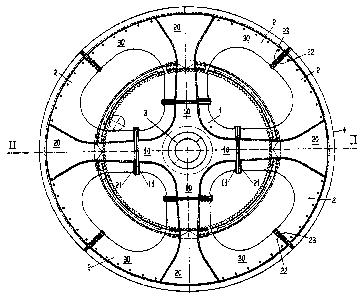Some of the information on this Web page has been provided by external sources. The Government of Canada is not responsible for the accuracy, reliability or currency of the information supplied by external sources. Users wishing to rely upon this information should consult directly with the source of the information. Content provided by external sources is not subject to official languages, privacy and accessibility requirements.
Any discrepancies in the text and image of the Claims and Abstract are due to differing posting times. Text of the Claims and Abstract are posted:
| (12) Patent Application: | (11) CA 2490656 |
|---|---|
| (54) English Title: | CABLE SHEAVE FOR A CABLEWAY SYSTEM |
| (54) French Title: | POULIE A CABLE POUR SYSTEME DE CABLAGE |
| Status: | Deemed Abandoned and Beyond the Period of Reinstatement - Pending Response to Notice of Disregarded Communication |
| (51) International Patent Classification (IPC): |
|
|---|---|
| (72) Inventors : |
|
| (73) Owners : |
|
| (71) Applicants : |
|
| (74) Agent: | SMART & BIGGAR LP |
| (74) Associate agent: | |
| (45) Issued: | |
| (22) Filed Date: | 2004-12-22 |
| (41) Open to Public Inspection: | 2005-12-24 |
| Examination requested: | 2006-09-29 |
| Availability of licence: | N/A |
| Dedicated to the Public: | N/A |
| (25) Language of filing: | English |
| Patent Cooperation Treaty (PCT): | No |
|---|
| (30) Application Priority Data: | ||||||
|---|---|---|---|---|---|---|
|
A cable sheave for cableway systems has a hub and a sheave
surface extending outwardly from the hub. The sheave surface
may be formed of spokes and a cable groove is formed on its
periphery. Fastening devices are provided in the sheave
surface for rigidly connecting at least two sheave parts to
one another to form the complete cable sheave. The parting
line(s) is located outside the hub. Here, a first cable sheave
part containing the hub and forming the central region of the
cable sheave is provided, and at least two further, second
cable sheave parts are provided, which parts are of identical
size, radially surround the first cable sheave part, are
connected rigidly to the first cable sheave part and to the at
least one second cable sheave part which is present and by
means of which the cable groove is formed.
Note: Claims are shown in the official language in which they were submitted.
Note: Descriptions are shown in the official language in which they were submitted.

2024-08-01:As part of the Next Generation Patents (NGP) transition, the Canadian Patents Database (CPD) now contains a more detailed Event History, which replicates the Event Log of our new back-office solution.
Please note that "Inactive:" events refers to events no longer in use in our new back-office solution.
For a clearer understanding of the status of the application/patent presented on this page, the site Disclaimer , as well as the definitions for Patent , Event History , Maintenance Fee and Payment History should be consulted.
| Description | Date |
|---|---|
| Application Not Reinstated by Deadline | 2011-12-22 |
| Time Limit for Reversal Expired | 2011-12-22 |
| Deemed Abandoned - Failure to Respond to Maintenance Fee Notice | 2010-12-22 |
| Deemed Abandoned - Conditions for Grant Determined Not Compliant | 2010-12-03 |
| Notice of Allowance is Issued | 2010-06-03 |
| Letter Sent | 2010-06-03 |
| Notice of Allowance is Issued | 2010-06-03 |
| Inactive: Approved for allowance (AFA) | 2010-05-31 |
| Amendment Received - Voluntary Amendment | 2010-01-29 |
| Inactive: S.30(2) Rules - Examiner requisition | 2009-11-13 |
| Amendment Received - Voluntary Amendment | 2009-09-09 |
| Inactive: S.30(2) Rules - Examiner requisition | 2009-04-20 |
| Letter Sent | 2006-10-18 |
| Request for Examination Requirements Determined Compliant | 2006-09-29 |
| All Requirements for Examination Determined Compliant | 2006-09-29 |
| Request for Examination Received | 2006-09-29 |
| Application Published (Open to Public Inspection) | 2005-12-24 |
| Inactive: Cover page published | 2005-12-23 |
| Inactive: First IPC assigned | 2005-04-01 |
| Inactive: Filing certificate - No RFE (English) | 2005-01-31 |
| Letter Sent | 2005-01-31 |
| Application Received - Regular National | 2005-01-31 |
| Abandonment Date | Reason | Reinstatement Date |
|---|---|---|
| 2010-12-22 | ||
| 2010-12-03 |
The last payment was received on 2009-11-18
Note : If the full payment has not been received on or before the date indicated, a further fee may be required which may be one of the following
Patent fees are adjusted on the 1st of January every year. The amounts above are the current amounts if received by December 31 of the current year.
Please refer to the CIPO
Patent Fees
web page to see all current fee amounts.
| Fee Type | Anniversary Year | Due Date | Paid Date |
|---|---|---|---|
| Registration of a document | 2004-12-22 | ||
| Application fee - standard | 2004-12-22 | ||
| Request for examination - standard | 2006-09-29 | ||
| MF (application, 2nd anniv.) - standard | 02 | 2006-12-22 | 2006-10-20 |
| MF (application, 3rd anniv.) - standard | 03 | 2007-12-24 | 2007-11-16 |
| MF (application, 4th anniv.) - standard | 04 | 2008-12-22 | 2008-10-08 |
| MF (application, 5th anniv.) - standard | 05 | 2009-12-22 | 2009-11-18 |
Note: Records showing the ownership history in alphabetical order.
| Current Owners on Record |
|---|
| INNOVA PATENT GMBH |
| Past Owners on Record |
|---|
| NORBERT HAEFELE |